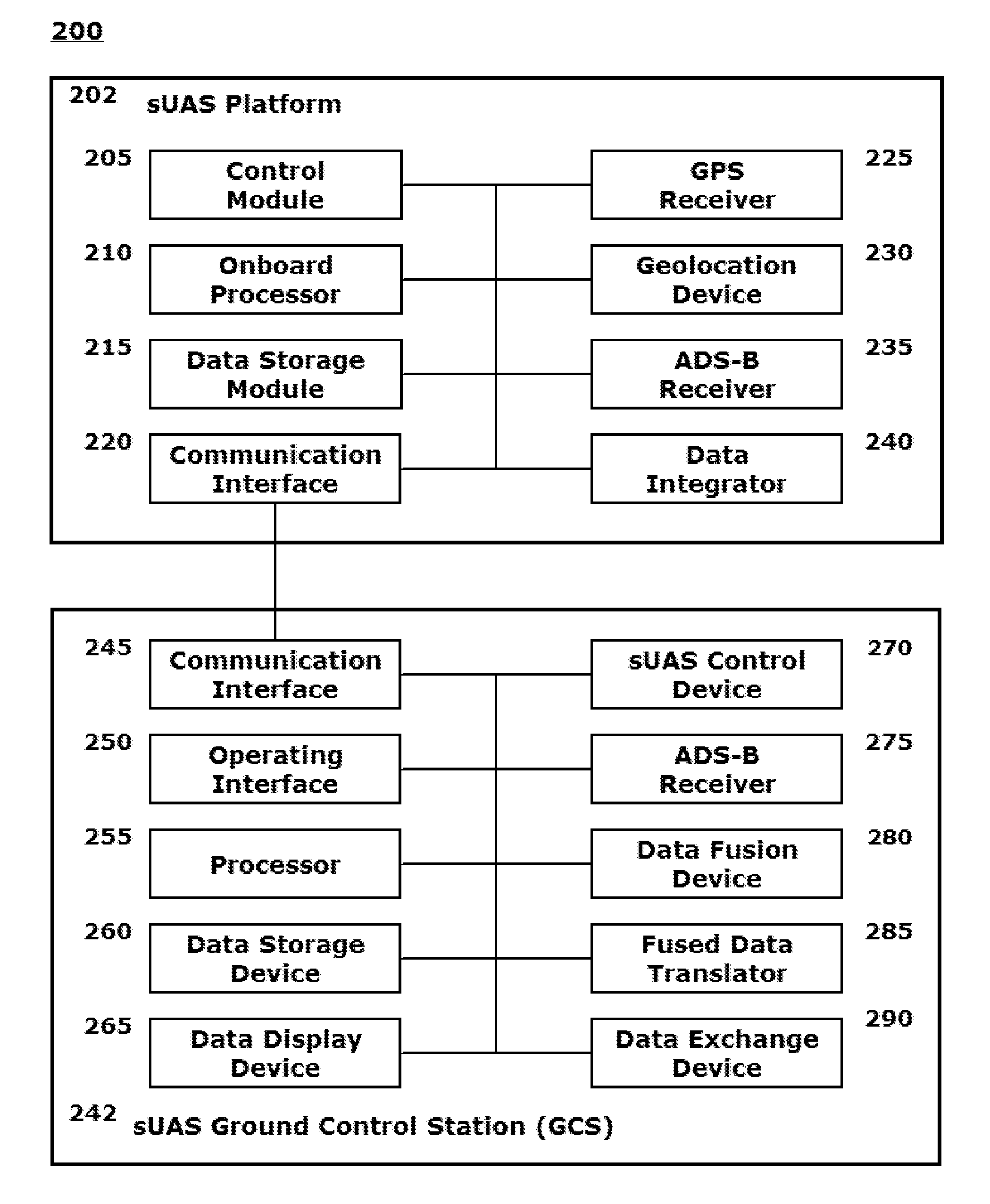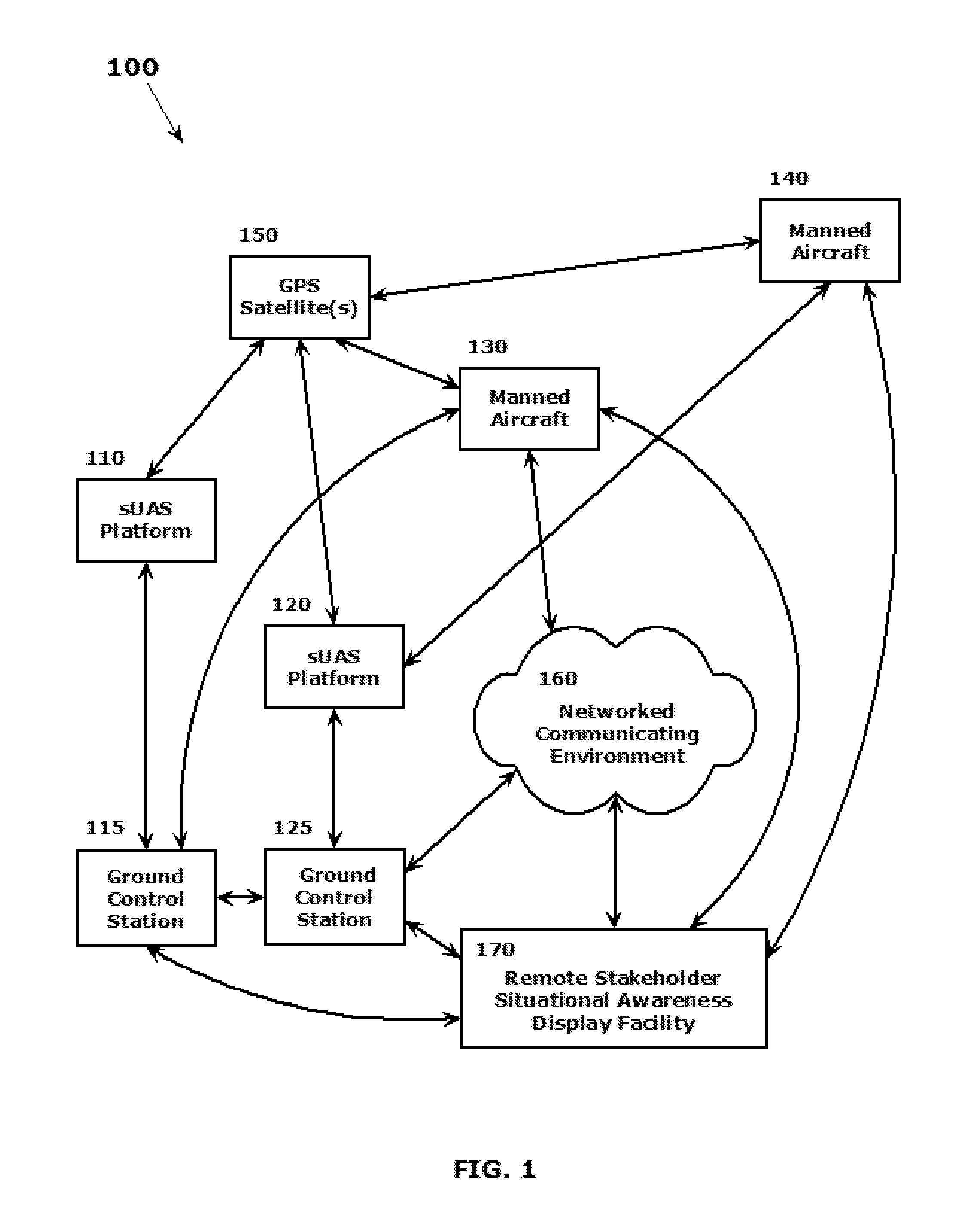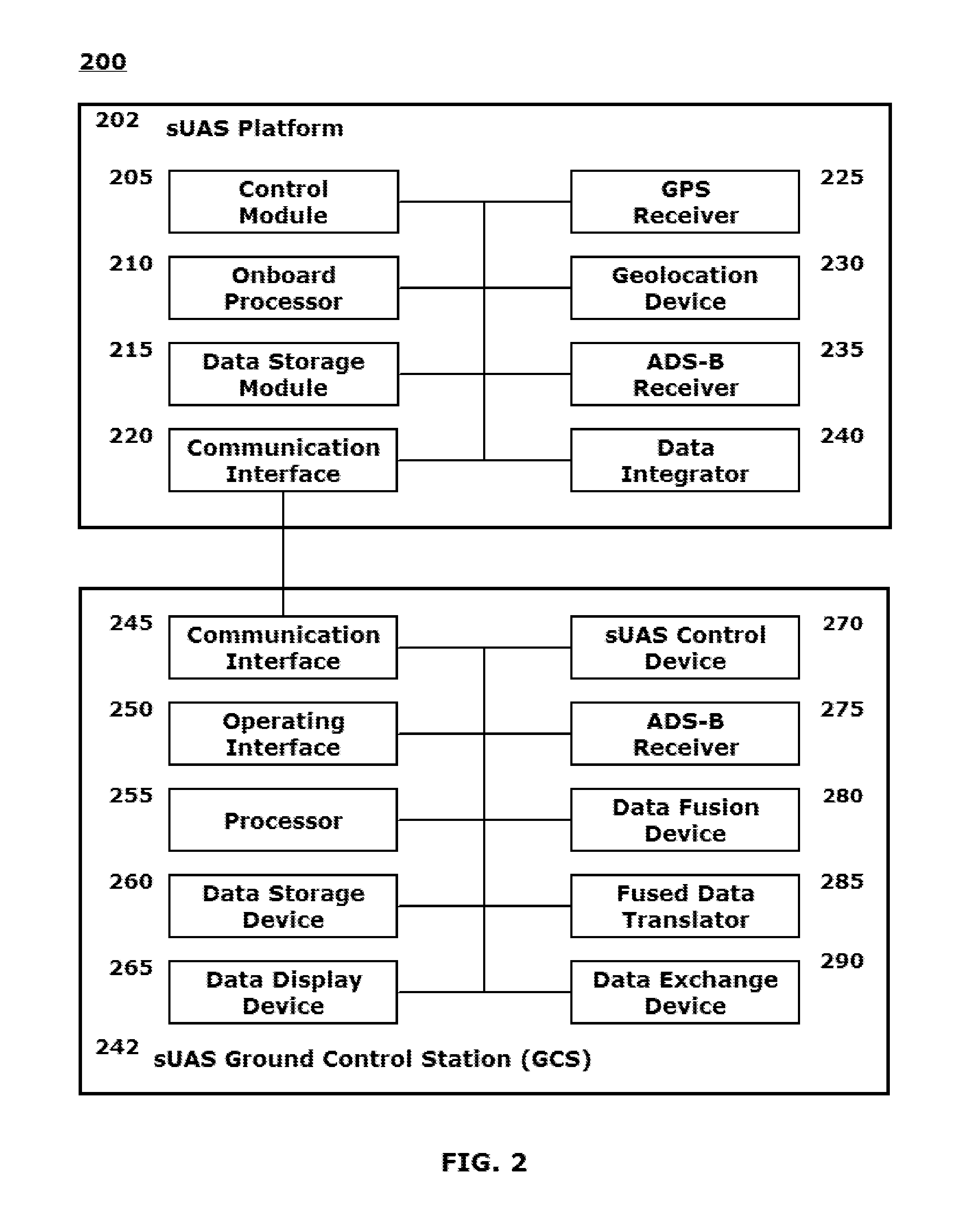Employing local, opportunistic automatic dependent surveillance-broadcast (ADS-B) information processed by an unmanned aerial vehicle ground control station to augment other source “knowledge” of local aircraft position information for improving situational awareness
a technology of automatic dependent surveillance and information processing, applied in vehicle position/course/altitude control, process and machine control, instruments, etc., can solve the problems of limiting the capacity of systems to be integrated, and the potential for these platforms to be involved in serious safety-related incidents, etc., to enhance local situational awareness, wide variation in suas missions and capabilities, and improve situational awareness.
- Summary
- Abstract
- Description
- Claims
- Application Information
AI Technical Summary
Benefits of technology
Problems solved by technology
Method used
Image
Examples
Embodiment Construction
[0002]This disclosure relates to systems and methods for employing local, opportunistic Automatic Dependent Surveillance-Broadcast (ADS-B) information to augment other source “knowledge” of local aircraft position information for improving situational awareness in areas lacking ADS-B coverage provided by other aircraft control agencies.
[0003]2. Related Art
[0004]Deployment scenarios involving unmanned aerial vehicles are increasing as the technology for local and remote control of those vehicles increases, and as government, law enforcement and other entities become aware of, and comfortable with, the capabilities and benefits of routinely employing certain unmanned aerial vehicles for certain mission types. The term “unmanned aerial vehicle(s),” as that term will be used throughout this disclosure, is intended to encompass a particular class of locally, generally line-of-sight, operated flying vehicles, including Unmanned Aerial Vehicles (UAVs) and the related Small Unmanned Aerial ...
PUM
 Login to View More
Login to View More Abstract
Description
Claims
Application Information
 Login to View More
Login to View More - R&D
- Intellectual Property
- Life Sciences
- Materials
- Tech Scout
- Unparalleled Data Quality
- Higher Quality Content
- 60% Fewer Hallucinations
Browse by: Latest US Patents, China's latest patents, Technical Efficacy Thesaurus, Application Domain, Technology Topic, Popular Technical Reports.
© 2025 PatSnap. All rights reserved.Legal|Privacy policy|Modern Slavery Act Transparency Statement|Sitemap|About US| Contact US: help@patsnap.com



